People can be afraid to do this, and ask lots of questions about whether or not it’s permissible, but they shouldn’t be afraid and should feel comfortable doing it. What are we talking about? The phenomenon of mixing metals in lighting and home décor!
It’s a common query stated in a few different ways: “Can I mix chrome faucets with brass light fixtures?” “Will oil-rubbed bronze clash with nickel?” “Do I need to have polished nickel everything?” “If I mix metals, is it breaking a rule?”
Yes, you can mix your metals. In fact, it looks really great if you do. Mixing metal finishes creates a more balanced and refined look. Plus, it showcases your unique ‘eye’ and style, making the room totally yours and yours alone. Mixing metals creates layers that all combine to make something excellent. It also shows intent—you care about how your space looks and want it to look great.
Here are a few ideas for mixing metals:
- Similarly-hued metals work well together. For example, nickels and chromes pair well.
- But so do very different metals, like polished nickel paired with bronze. In this instance, it’s good to combine a light metal with a dark one.
- Think of some metals, like gold or brass, as warm and others like chrome or silver as cool. Then try a mix of a warm and cool!
- Mix no fewer than two metals and no more than four different ones for the best results.
- Try picking a dominant metal and then contrasting it. For example, if most of the items in one room are finished in chrome, add in a brass light fixture.
- Consider a two-thirds, one-thirds rule where the dominant metal is used in two-thirds of the space while a contrasting metal is used in the other third.
- While your cabinet pulls should be done in the same metal as the hinges (if you have exposed hinges), it’s OK to then pair that matching set of hardware with different finishes in other parts of the room.
This kitchen uses bronze Kichler Hatteras Bay pendants with a faucet and cabinet hardware in the silver family.
The polished nickel Hudson Valley Quincy sconce seen here is offset perfectly with bronze drawer handles.
In this example, the pendants, ceiling mount lights and wall lamps are finished in a dark tone, but the faucet is silvery, as is the drawer hardware on the island. This Minka Lavery pendant has a great look.
Look at how gorgeous gold and silver look together! Get this look with a sconce like the Savoy House Devon.
Everything in this rustic-style bathroom combines brilliantly. Bath bars like the Quoizel Nicholas look great with any space.
Here’s another mix of warm and cool. The pendants above the island are the Hudson Valley Darien in a historical nickel finish! Don’t they go so well with the stools?
Here’s a great example of a mini chandelier in action, too.
Oil-rubbed bronze faucets are a stylish deviation from the metals that are usually used there. Shaded sconces like the Feiss Lismore offer flattering light.
From the brassy semi-flush mount to the silvery garden stools, this room combines so many rich metallic hues and looks like a million bucks.
To recap: yes, mixing metals is OK! It creates a balanced, refined and intentional look that makes the room uniquely yours. So, go out there and mix metals freely!
Do you need lighting advice or help? Get in touch on social media, livechat with us on our website or call us at 1-866-688-3562.
Photos from Houzz. Photo credits in alt tags.

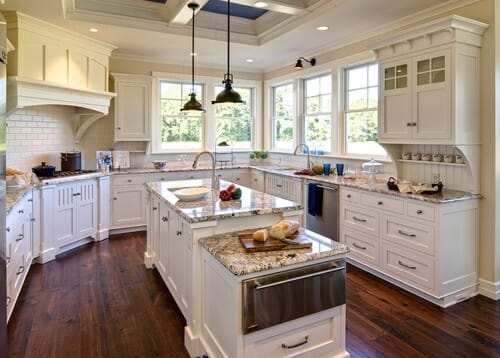


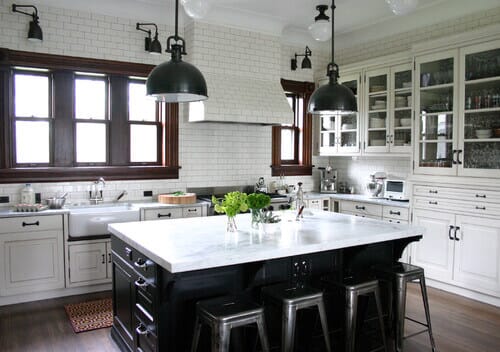
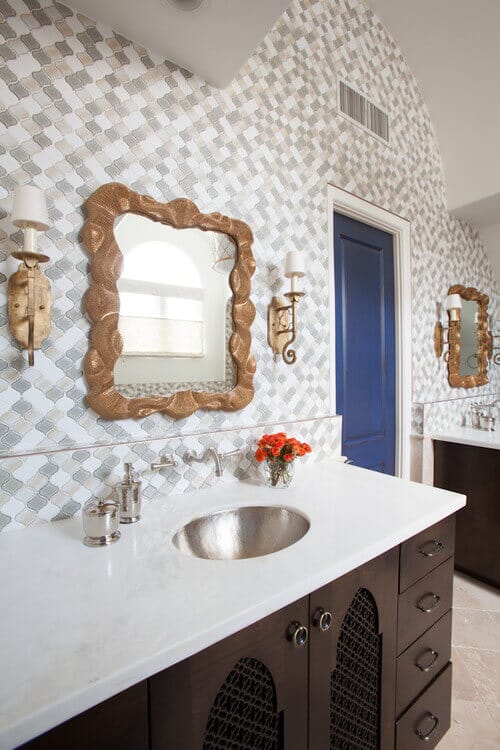
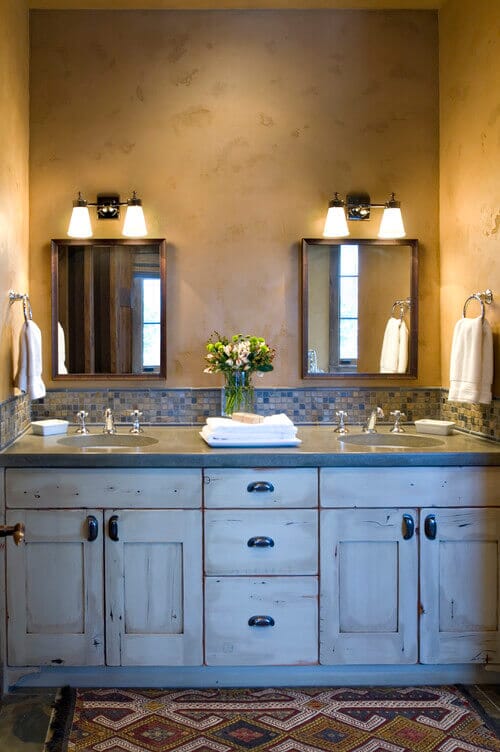

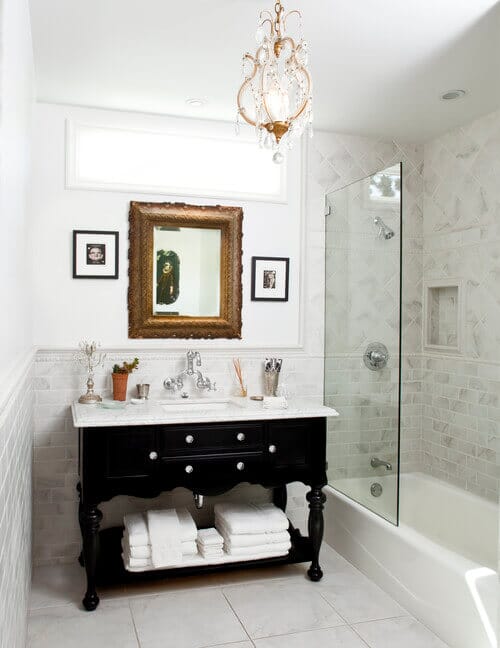





December 6, 2021
[…] Mixing metals creates layers that all combine to make something excellent. It also shows intent—you care about how your space looks and want it to look great. Here are a few ideas for mixing metals: Similarly-hued metals work well together. via […]